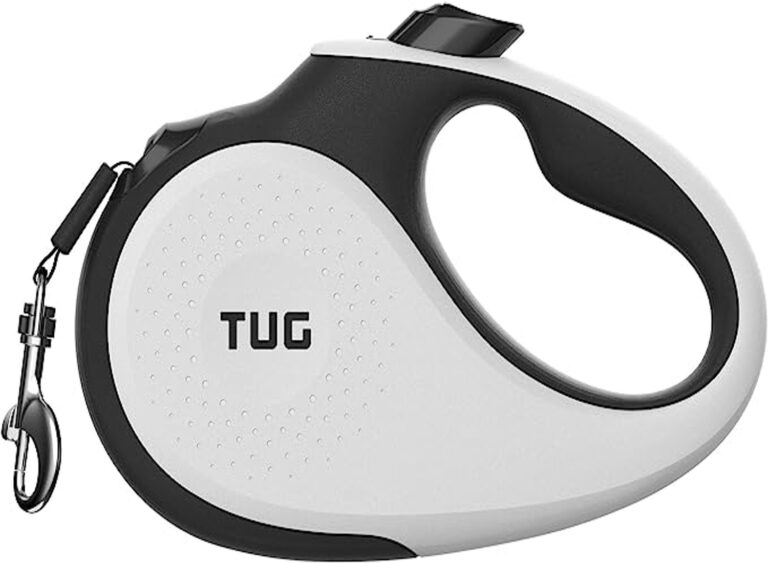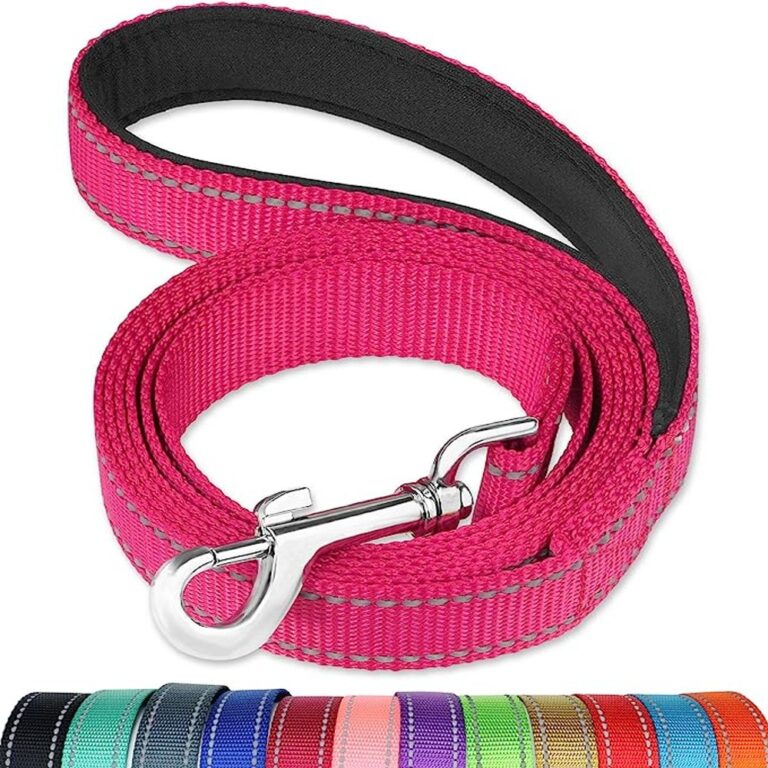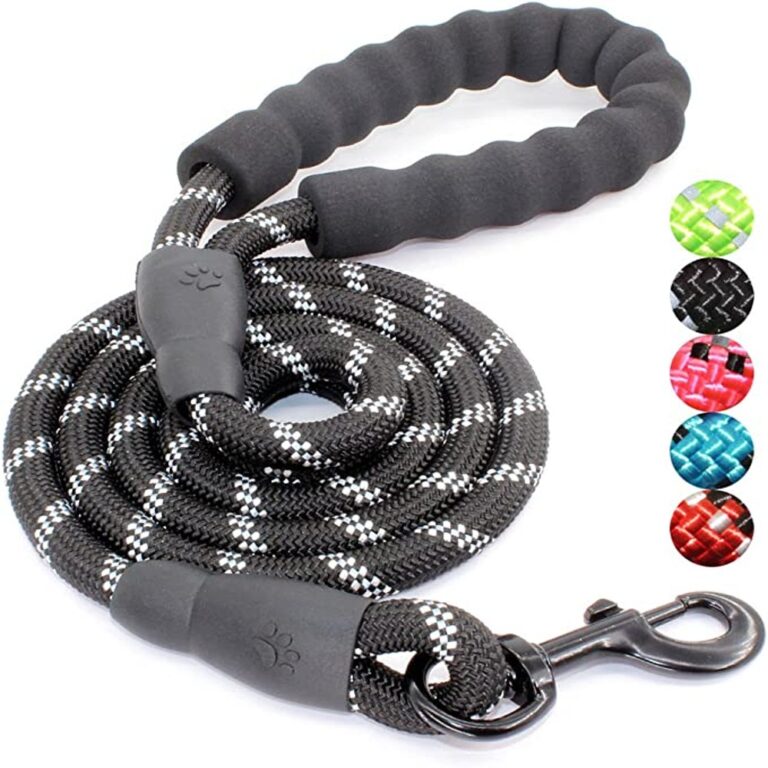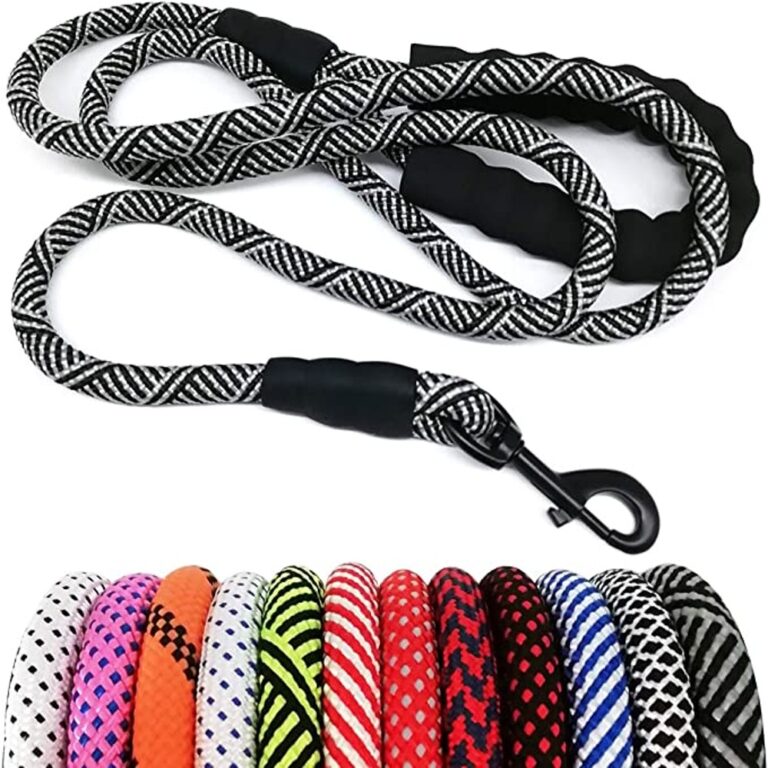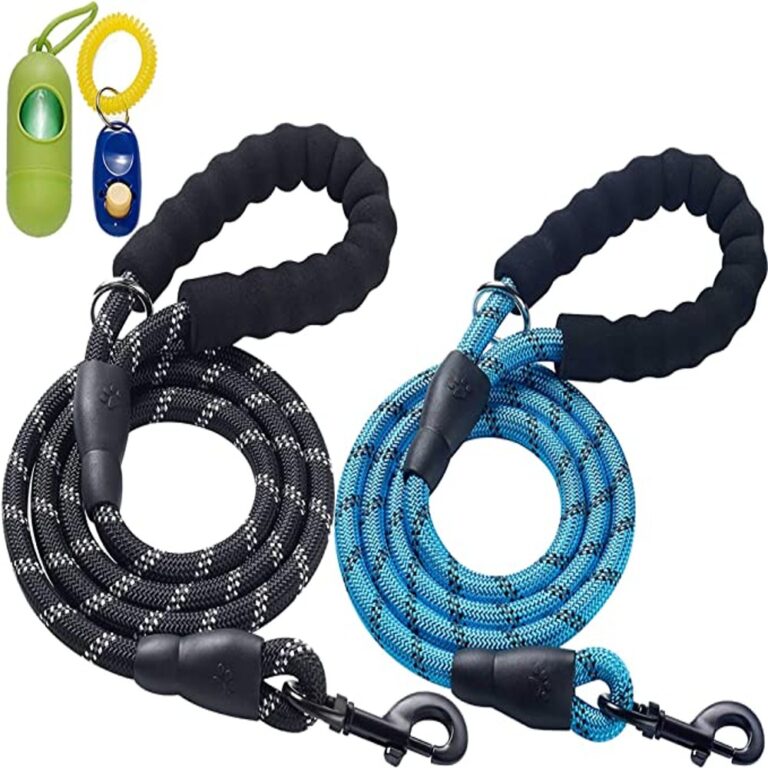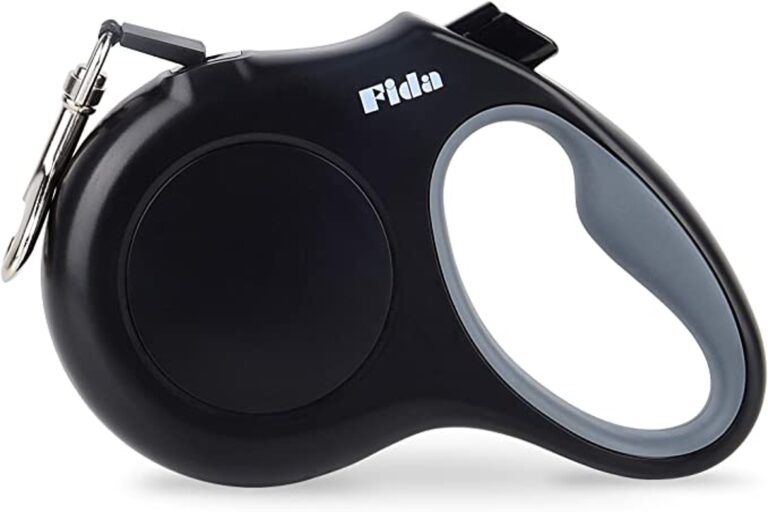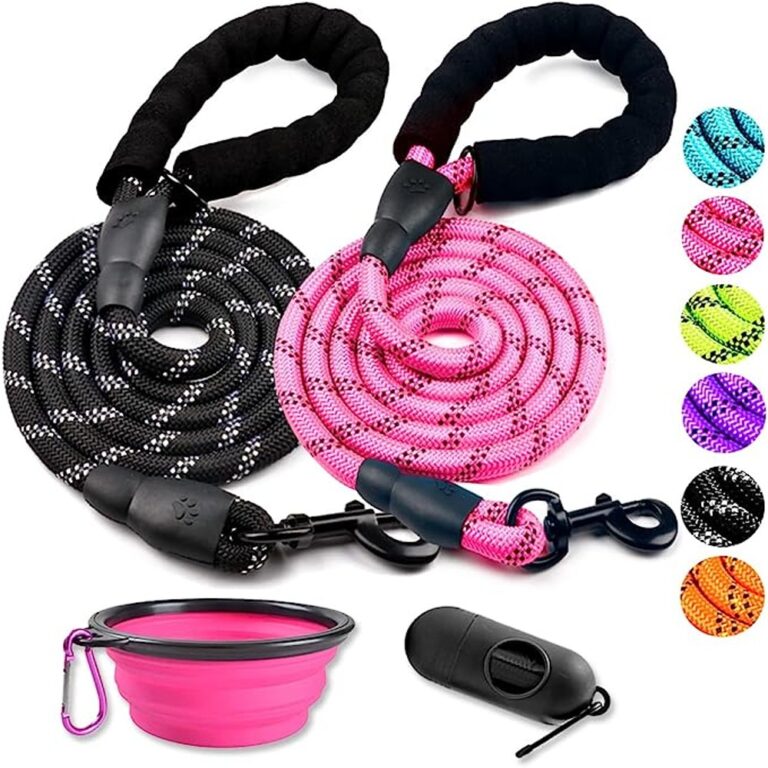- Home
- Gear Categories

We independently research, test, review, and recommend the best products - learn more about our process here. If you buy something through our links, we may earn a commission.
The Best Dog Leash For Your Favorite Pup
Last updated: 24 Feb 2024
As a dog parent myself, I walk my dogs multiple times a week. If you're like me, you know how important a dependable leash is. The best dog leashes don’t get in the way and will help you keep the canine safe and secure. With the right leash, you know your walk around the block or trek through the woods will be a breeze.
While searching for the best dog leash for your dog, be mindful that these should be sturdy enough to stand the occasional chomp. The leash shouldn’t fray or snap after experiencing a few jolts. And it should come with a clasp that you can attach easily to your dog’s harness or collar. But there are so many to choose from! Don't worry; we've got you covered. In this guide, we have reviewed some of the top-selling dog leashes to help purchase one.
Show contents
Detailing the Elite Dog Leashes of 2024
Buyer's Guide for Finding a First-Rate Dog Leash
Although you may not realize it, a dog leash is a crucial tool for any dog owner. Many times, it has saved me and my dogs from muddy paws, puddle jumps, and encounters with bees. But there are different ropes for different purposes. So, this buyer’s guide will help you buy the best dog leashes.
What to Consider Before Purchasing a Dog Leash?
Here are a few considerations that you should take into account while buying the best dog leashes.
The law in your area
Local rules govern where and how dogs must be leashed in many localities. Look up the restrictions (which may include precise requirements for leash lengths) and make sure the leash you buy meets them.
Size of your dog
The greater the pooch, the heavier the chain they can bear is a decent general guideline. The weight of the leash is affected by the material, thickness, and clip. You should also consider your own strength in relation to your dog. The longer the leash, the more likely you’ll be dragged. So long leashes may be great for small dogs like mine, but a larger dog needs to be kept on a short leash.
What Level of Independence Do You Want Your Dog to Have?
If your dog walks obediently on a leash and you enjoy walking in nature or in areas with few other people or animals, you may feel more at ease allowing him the independence of a longer leash. For example, I use a retractable leash around my neighborhood or on my lawn, but at crowded events, I use a regular long leash.
What Styles Appeal to You?
Keep in mind your personal comfort as the person in charge of the leash. Every material has its own set of advantages and disadvantages, and determining which is suitable for you is a personal choice. Nylon leashes, for example, are popular and long-lasting, but they might cause rope burns if you have a powerful dog that pulls a lot. Leather leashes are soft but durable, and they feel fantastic in your hand, but they do need a little more care if they get wet.
In addition to the material, ensure the chain circle is the appropriate size for your hand. Then there’s the leash clip, which is available in a number of styles as well. Choose one that is easy for you to manage if you have any manual dexterity concerns.
Let’s Look at the Different Types Now That You Know What You Need in General
The standard dog leash
These leashes are usually made of Nylon or leather, while other materials like cotton and rubber are also available, but they’re not as durable and therefore considerably less frequent.
Both nylon and leather are durable enough to confine an adult dog while remaining lightweight enough to be used with a puppy. They range in length from 4 to 8 feet, with 6 feet being the most prevalent. This length provides lots of leeway for movement while being short enough to provide the handler total control of their dog in the event of an emergency.
Retractable dog leashes
Retractable dog leashes enable you to choose the length of the leash you give your dog for maximum movement. They’re similar to measuring tapes in that they include a nylon cord that can stretch anywhere from 4 to 30 feet and a locking mechanism in the plastic handle that allows you to secure the leash at various lengths. When you push the button, they automatically collect the leash and draw the line into the handle.
Adjustable dog leashes
By providing you with a length-adjustable leash, these leashes attempt to bridge the gap between standard and retractable leashes. From 3 to 6 feet, adjustments may normally be made by adding or removing loops or additional clips along the length. These allow you to use a shorter leash for training when you want your dog to stay close to you, while also enabling you to walk your dog more freely in less crowded areas.
Chain leashes
This sort of leash may be used in place of a regular leash and is especially good for dogs who chew and destroy their leashes. They’re available in a range of weights and thicknesses, so they’re suitable for dogs of all sizes.
You should be vigilant while using a metal leash on your dog. Although most dogs quickly learn that a chain leash is unbreakable and quit chewing it, other dogs will continue to chew the lead, which may cause tooth damage.
The martingale leash
The attributes of a typical leash and a martingale collar are blended into this leash. When your dog pulls, it tightens around his neck, not suffocating him, but placing just enough pressure on his neck to function as an aversive, making it difficult for them to pull and thus discouraging them.
Detailing the Elite Dog Leashes of 2024
1
TUG Dog Leash
– Best OverallTHE SCOOP
Part of why I love TUG dog leashes is because they have three different sizes so you’re sure to get the right one for your pup. TUG leashes have a 16-foot retractable length with an easy-adjust retraction. It features a 360-degree tape movement that is anti-tangle. Lord knows how many times I’ve been twisted by a leash!
With its quick lock and unlock feature, it’s simple to roll on and off with your thumb. TUG leashes have an innovative anti-slip handle for a secure grip on long walks. It also includes a heavy-duty internal coil for reliable retraction.
Key Features
- Easy to use.
- Tough and durable
- 360-degree tangle-free leash made of non-chewable material.
- Quick lock and brake system
2
FunTags Dog Leash
– Runner UpTHE SCOOP
I like how FunTags dog leashes have comfortable, cushioned handles which makes them easy to grip. Simply enjoy your walks with your dog while protecting your hand from rope burn! The swivel clasp keeps the leash free from twisting and tangles, enabling your dog to move more freely.
The fabric of the dog leashes is made of durable nylon with high-density webbing. The dog leashes include luminous reflecting stitching that reflects light at night for better visibility.
Key Features
- Padded handle provides a cushion
- Reflective stitching offers improved visibility at night
- Available in12 different colors.
- Adjustable dog collar
3
BAAPET Dog Leash
– Honorable MentionTHE SCOOP
If you’re anything like me, your dog’s safety is a big concern of yours. Luckily, the BAAPET dog leash is manufactured with the thickest 1/2 inch diameter rock climbing rope and an extremely sturdy clip hook, ensuring you and your pup are safe on your walks. These BAAPET dog leashes have soft cushioned grips for comfort as well. With this leash, you can enjoy long walks with your dog while protecting your hands from rope burns.
BAAPET dog leashes are made with highly reflective threads that keep you safe and visible on late-night walks. This 5-foot long BAAPET dog leash gives your dog just enough freedom while keeping everything under your control.
Key Features
- Made of sturdy rock climbing rope
- Comfortable handle offers a firm grip
- Highly reflective threads work for night
- 360-degree rotating clasp
4
MayPaw Dog Leash
– Most ConvenientTHE SCOOP
For medium and big dog breeds, this MayPaw half-inch diameter circular dog leash is a perfect choice as it’s both lightweight and robust. MayPaw’s 6-foot-long leash allows your dog to walk in front of you while enabling you to better monitor traffic.
This nylon MayPaw dog leash combines strength and comfort. It also has a gorgeous color that makes it stand out.
Key Features
- Heavy-duty rope
- Soft handle allows more grip and control
- Comes with a durable clip
5
Ladoogo Dog Leash
– Most ReliableTHE SCOOP
Say goodbye to rope burn! The Ladoogo dog leash has an ergonomic and soft foam handle that allows you to keep a solid and pleasant hold without digging into your hands, even when your dog pulls it off.
The Ladoogo dog leash provides your dog with adequate freedom while keeping everything under your control. It is made of a sturdy half-inch diameter rock climbing rope and a rustproof 360-degree tangle-free swivel hook that is stronger than other ordinary dog leashes. The highly luminous threads on the Ladoogo heavy-duty rope dog leash maintain visibility high at night for safety.
Key Features
- This durable rope can be your go-to option to enjoy a long walk with your pet.
- It contains a ring to carry the poop bag along.
- The comfortable foam handle doesn’t irritate your skin.
- The highly reflective threads offer improved visibility at nighttime.
6
Fida Dog Leash
– Also ConsiderTHE SCOOP
With a 16-foot length, high-strength nylon tape, and a rustproof swivel hook, this Fida Black Retractable Pet Leash is tangle-free. It is made of durable ABS plastic and is appropriate for small dogs weighing up to 26 pounds. It contains a long-lasting internal coil spring for consistent retraction over a long period of time. Fida dog leash has a black leash tape with white reflective elements integrated into it. This highly luminous string leash gives dogs and their owners more security and visibility at night.
Fida dog leash is manufactured with a long-lasting soft material to offer a super-comfortable grip for extended walks. It’s tangle-free and ideal for walking, jogging, running, camping, and trekking, as well as relaxing strolls in the backyard.
Key Features
- The anti-slip handle offers you a strong grip.
- It has a strong reflective tape for better visibility.
- The rustproof hook makes it long-lasting.
- It comes with an anti-twist inlet and is available in different sizes
THE SCOOP
If your dog has broken several leashes, a climbing rope like this could be the best option. This 5-foot long COOYOOO dog leash is made of a half-inch thick rock climbing rope. It includes a heavy-duty snap hook that the toughest dog will not be able to break apart. The woven rope material of this dog leash is pleasant to hold for long periods of time, letting you enjoy your time with the dog.
For increased comfort, the handles of the COOYOO leash are softly cushioned and ergonomically built. It provides a tight grip without causing rope burns.
Key Features
- Padded handle for grip protection
- Rubber protector and reflective thread
- Metal clasp that won’t break apart
People Also Asked
Q: What is the best kind of dog leash?
A: A conventional 6-foot nylon or leather leash is the ideal dog leash to use. Six feet is long enough to let you move about freely while keeping your dog near and under your control. However, avoid using other materials like cotton or rubber because they aren't as sturdy or long-lasting.
Q: Are lengthy leashes bad?
A: Long collar-attached leashes are dangerous and can permanently injure a dog's neck. To avoid harm, attach a long leash to your dog's harness rear clip rather than on a collar.
Q: Can a dog's leash be too heavy?
A: It's crucial to get a leash for your dog that isn't too heavy. If your leash is overly hefty, you'll confuse your dog during training since he'll believe you're tugging on it when you're not.
Q: How often should I walk my dog?
A: In addition to potty breaks throughout the day, a healthy dog should have at least one 15 to 30-minute walk each day. Healthy and large dogs may even walk for up to two hours.
Q: Why are dog leashes important?
A: Dog leashes protect your dog from foot and vehicle traffic as well as unrestrained animals. They also help train your dog to obey you.
Contributors
Former Special Forces Canine Handler
